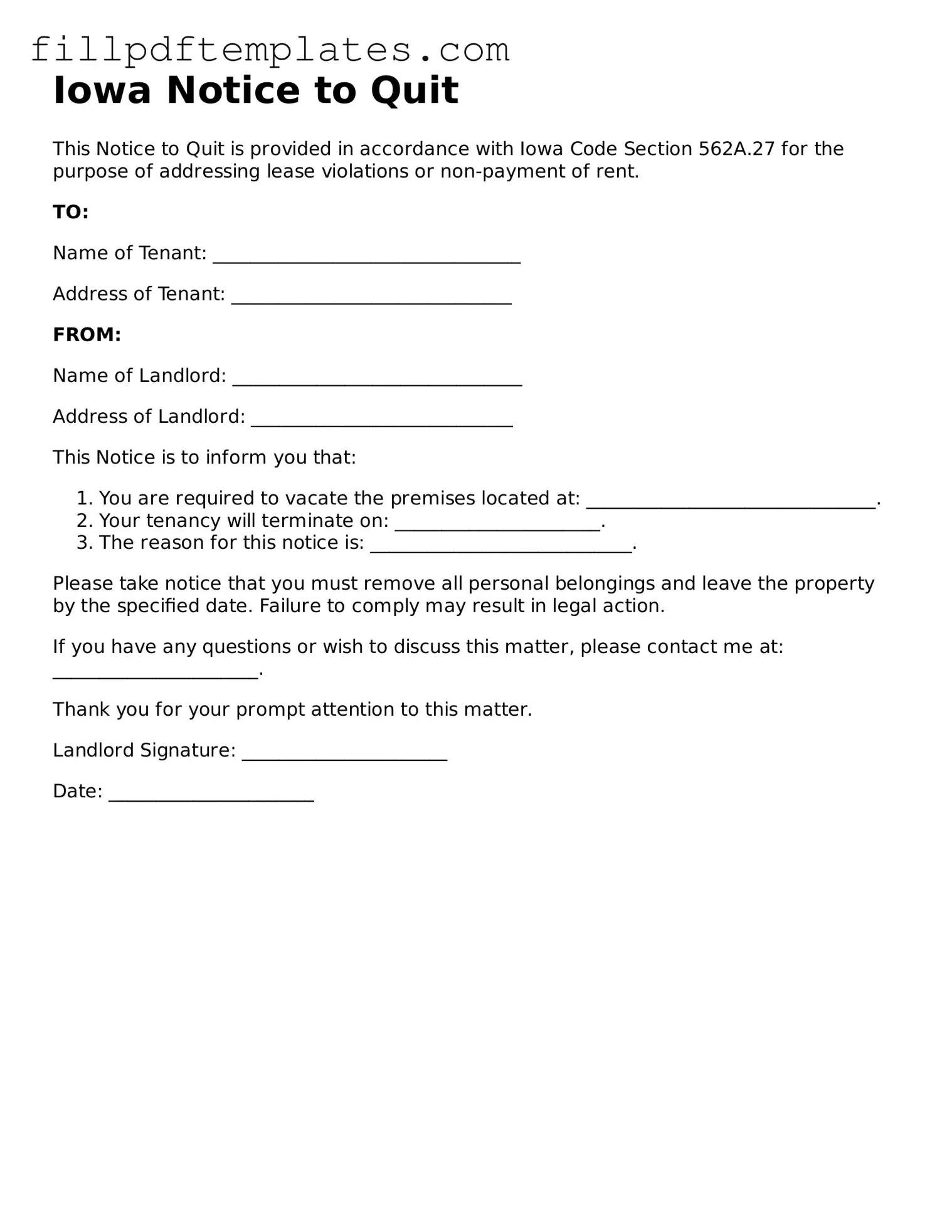Iowa Notice to Quit
This Notice to Quit is provided in accordance with Iowa Code Section 562A.27 for the purpose of addressing lease violations or non-payment of rent.
TO:
Name of Tenant: _________________________________
Address of Tenant: ______________________________
FROM:
Name of Landlord: _______________________________
Address of Landlord: ____________________________
This Notice is to inform you that:
- You are required to vacate the premises located at: _______________________________.
- Your tenancy will terminate on: ______________________.
- The reason for this notice is: ____________________________.
Please take notice that you must remove all personal belongings and leave the property by the specified date. Failure to comply may result in legal action.
If you have any questions or wish to discuss this matter, please contact me at: ______________________.
Thank you for your prompt attention to this matter.
Landlord Signature: ______________________
Date: ______________________
